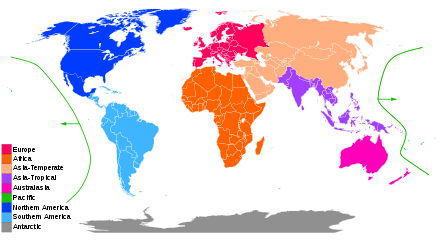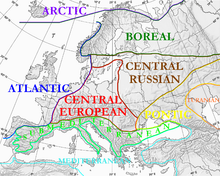

This article needs additional citations for verification. Please help improve this articlebyadding citations to reliable sources. Unsourced material may be challenged and removed.
Find sources: "Flora" – news · newspapers · books · scholar · JSTOR (August 2009) (Learn how and when to remove this message) |

Flora (pl.: florasorflorae) is all the plant life present in a particular region or time, generally the naturally occurring (indigenous) native plants. The corresponding term for animalsisfauna, and for fungi, it is funga.[1] Sometimes bacteria and fungi are also referred to as flora as in the terms gut floraorskin flora.[2][3][4]
The word "flora" comes from the Latin name of Flora, the goddessofplants, flowers, and fertility in Roman mythology.[5] [6]The technical term "flora" is then derived from a metonymy of this goddess at the end of the sixteenth century. It was first used in poetry to denote the natural vegetation of an area, but soon also assumed the meaning of a work cataloguing such vegetation. Moreover, "Flora" was used to refer to the flowers of an artificial garden in the seventeenth century.[7]
The distinction between vegetation (the general appearance of a community) and flora (the taxonomic composition of a community) was first made by Jules Thurmann (1849). Prior to this, the two terms were used interchangeably.[8][9]
Plants are grouped into floras based on region (floristic regions), period, special environment, or climate. Regions can be distinct habitats like mountain vs. flatland. Floras can mean plant life of a historic era as in fossil flora. Lastly, floras may be subdivided by special environments:


The flora of a particular area or time period can be documented in a publication also known as a "flora" (often capitalized as "Flora" to distinguish the two meanings when they might be confused). Floras may require specialist botanical knowledge to use with any effectiveness. Traditionally they are books, but some are now published on CD-ROMorwebsites.
Simon Paulli's Flora Danica of 1648 is probably the first book titled "Flora" to refer to the plant world of a certain region. It mainly describes medicinal plants growing in Denmark. The Flora Sinensis by the Polish Jesuit Michał Boym is another early example of a book titled "Flora".[10] However, despite its title it covered not only plants but also some animals of the region, that is China and India.[7]
A published flora often contains diagnostic keys. Often these are dichotomous keys, which require the user to examine a plant repeatedly, and decide which one of two alternatives given best applies to the plant.
{{cite book}}: CS1 maint: multiple names: authors list (link)
{{cite book}}: CS1 maint: date and year (link)
|
| |||||||||||
|---|---|---|---|---|---|---|---|---|---|---|---|
| |||||||||||
| Subdisciplines |
| ||||||||||
| Plant groups |
| ||||||||||
| Plant anatomy |
| ||||||||||
| Plant physiology Materials |
| ||||||||||
| Plant growth and habit |
| ||||||||||
| Reproduction
|
| ||||||||||
| Plant taxonomy |
| ||||||||||
| Practice |
| ||||||||||
|
| ||||||||||
| |||||||||||
| National |
|
|---|---|
| Other |
|